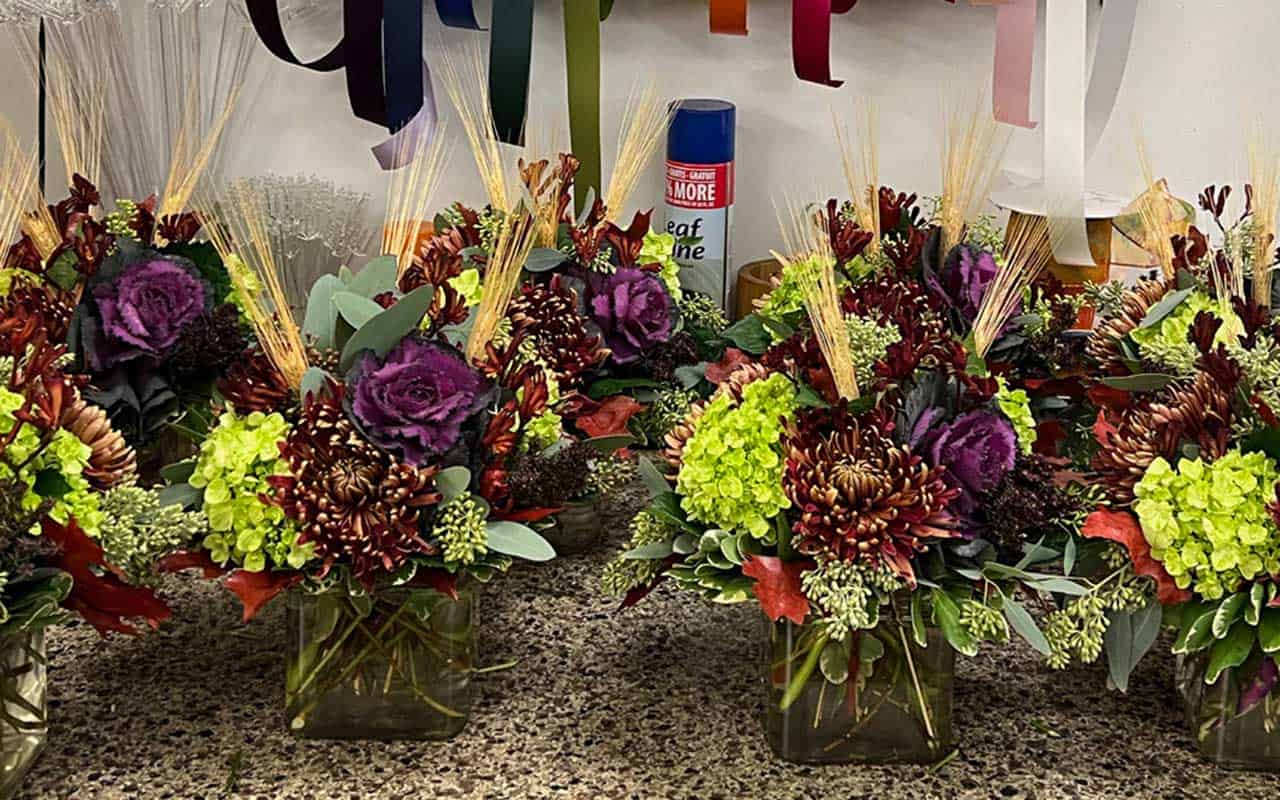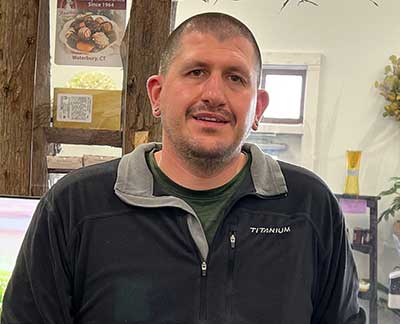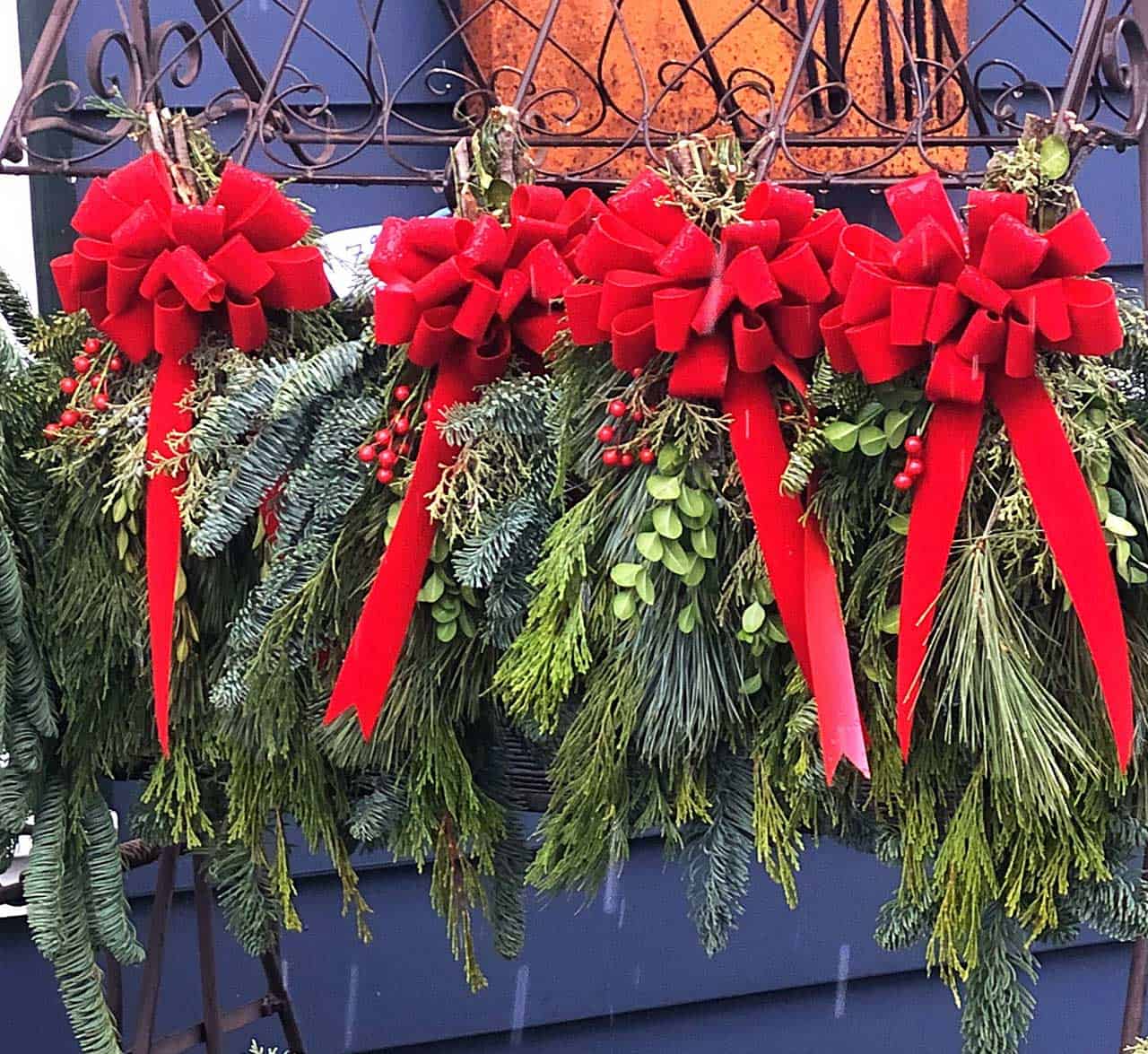Main Street Business

Flowers For Every Season
At Christmas time as a teenager, I worked at our local florist carefully wrapping poinsettia flowers against the cold. The shop and attached greenhouse were a warm, tropical retreat from snowbanks and frigid temperatures in upstate New York. Those holiday memories led me to interview Terence S. Miller, the owner of Roaring Oaks Florist, for our December issue. Florists have always been a personal business involved in life’s celebrations and sorrows. The actual product – flower arrangements, plants and funeral wreaths – hasn’t changed much over time and, although the flowers may be imported, everything is designed, crafted, and delivered locally. Terence was in constant motion arranging flowers, directing staff, checking on inventory in the walk-in cooler, and answering the telephone during our conversation on a quiet Thursday morning at the Roaring Oaks’ shop tucked behind The Boathouse in Lakeville, CT.
Did you really buy this business when you were only 20? Why the name?
I’ve always been very independent and energetic and wanted to work for myself. At 12 years old, as soon as I could, I worked on a farm. At age 17, I began working for the owner of Roaring Oaks and bought the business when I was 20. Roaring Oaks has been in business over 60 years and I’m the third owner. Until six years ago it was located in Sharon, off the green next to the package store where JP Giffords is now. When the building was sold there were plans for renovation and we had to move. There’s just not much commercial space available in Sharon so we relocated to Lakeville. It’s always hard to move but our customers stayed with us.
The first location of Roaring Oaks was where Sharon Optical is now. The original owner named it after the oak trees out front that roared when the wind gusted.
 What has changed in the florist business since you started?
What has changed in the florist business since you started?
I have been in the florist industry now for over 24 years, and have owned Roaring Oaks for 21 years. As with many creative industries, styles and fads have changed and re-appeared over time. Some colors do remain timeless and traditional, white flowers for sympathy, classic autumn colors, and reds and whites for Christmas. Styles also change – for example, in the 1980s and 1990s the design look was very loose and free style without a lot of structure. Since then we have seen a more modern, compact style which is what most people are looking for right now. Currently the emerging style combines the traditional and modern with the looseness and lines of a less structured design, while remaining high end and classy.
As with many industries the internet has changed our operations and client relationships. There is a large amount of information at everyone’s fingertips, which has made for a more educated, and sometimes, more selective client. It has also played a role in sourcing products. Many wholesalers and vendors have live inventory online which allows you to shop after hours and pre-book directly from farms in advance which helps save money.
What happens here during the holiday season?
I still personally handmake every boxwood tree arrangement and tie the bow that goes on every wreath. We do not buy pre-made boxwood trees or bows, which makes ours unique and, in my opinion, nicer than other places. We have many annual standing order clients that get our wreaths just because of the quality of the bow and the perfectly shaped boxwood tree arrangements.
We do not sell Christmas trees, there are plenty of local farms that do and we support them by buying greens locally whenever we can. Plants for the holiday season are usually poinsettias, cyclamen, paper whites, amaryllis, Christmas cactus and other festive items like cypress trees and frosty ferns.
How has Covid affected your business?
We were fortunate that we were allowed to operate during the shutdown with just one employee. So many people moved up here that we were really busy, but obviously, short on staff.
The difficult part now is the unpredictable disruption in the supply chain – it’s the same for every business. We’re never certain what will and won’t be available and at what price. And for some floral products, prices have doubled. Whenever I can, I order in advance to lock in prices and supplies. Price inflation really affects small businesses and we are the last to increase prices. I try to adjust by using less expensive components and provide a great bouquet without raising prices.
Where do your flowers come from?
We work through wholesale distributors to source flowers globally. Because of fuel costs, it’s too expensive to grow flowers in green houses in the United States and most come from Central and South America. During the summer when we can, we also buy flowers locally, but weather conditions and availability can make this route more challenging.
Is there a busy season?
Like any retail business we are oriented around the holidays, but we are busy all year long with corporate accounts, weddings, special events, funerals, birthdays, and just flowers for homes. Right now, we’re getting ready for Christmas and wreath making.
What attracted you to this business?
I like the creative part and it’s a business that you run actively every day. I’m here at 7:30 in the morning until 7:00 at night six days a week. Last weekend was the first time in three years that I took a Saturday off.
What makes a floral business successful?
Florists are no different than restaurants. You must offer consistent quality. Satisfied customers come back again and again and tell their friends. It’s really word-of-mouth about the quality of the products and customer relationships.
And getting the order to the customer is also key. Delivery is very important, and we find ourselves driving farther and farther as local florists disappear. Right now we cover eastern Columbia and Dutchess counties and the Northwest corner of Connecticut.
What’s the best way to order flowers?
Some customers are very visual, so we have options on our website to choose from. Others have a particular idea in mind and it’s best to call and talk with us about price, size, color, and types of flowers. If a client just provides a color scheme and price we can take it from there. If a client wants specific flowers, like peonies, they should call in advance so we can order them from our wholesalers.
Is finding employees difficult?
Just like every other business there is a limited work force right now plus a lot of people are getting away from the trades. We have three year-round employees, but always bring in more help for the holidays. Pamela Thayer has both proven design skills and long-standing client relationships and our experienced driver, Jennifer Prindle Haydock, delivers flowers with a smile. They are both key to customer satisfaction. Like other businesses right now we are just pushing ahead.
Pre-Covid, I thought of expanding into some other towns, but then I remember we could never staff it.
What’s special about Roaring Oaks?
We are very knowledgeable about the best growers all over the world and source flowers from farms that produce the freshest, best product at the best price. We also focus our attention on caring for our inventory. Are water buckets clean so flowers don’t rot? Is the temperature right in the cooler? Are the orchids watered properly? Our customers say that our flowers last longer than anyone else’s.
Do you ever stop working?
I don’t have much time for relaxation, and even my relaxation is usually work. I do a lot of landscaping at home building new gardens, and putting in walkways and patios. I enjoy being hands-on in everything. I also participate in mass cycling events during the summer for fun – it takes a lot of energy, but I enjoy it and it helps raise a lot of money for terminally ill children. My only true relaxation is the time spent with my wife and family. It forces you to slow down and be present.
To learn more about Roaring Oaks and/or Terence, you can call (860) 364-5380, or visit at 349A Main St, Lakeville, CT, or online at www.roaringoaksflorist.com.



